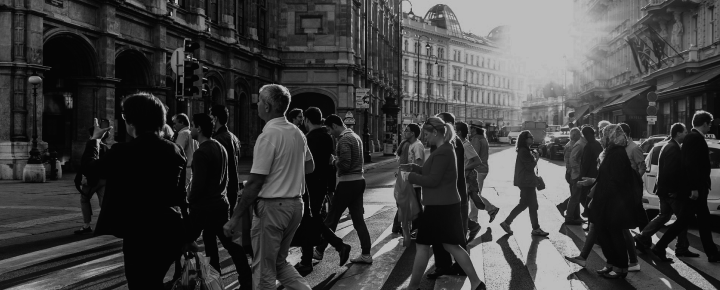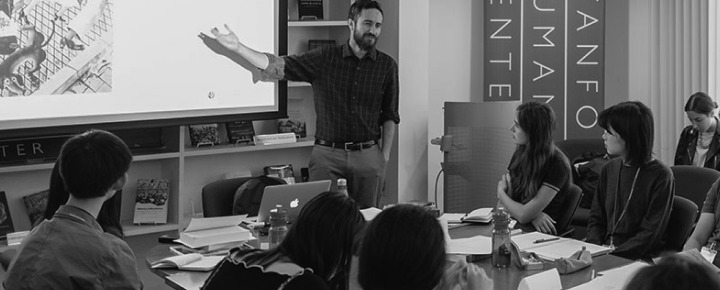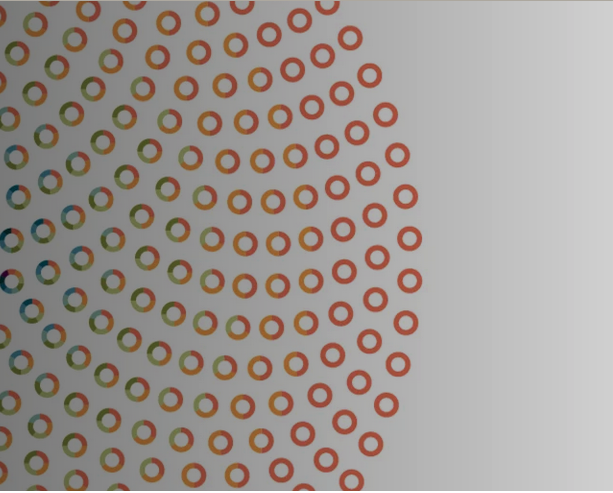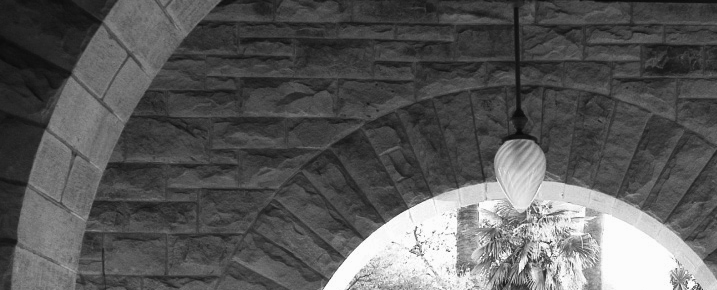In 1968 Tatsumi Hijikata, the instigator of the Japanese avant-garde movement form known as butoh, engaged in a collaboration with photographer, Eikoh Hosoe. This project, titled Kamaitachi, consisted of a striking set of images created as what Hosoe called a “subjective documentary” of their youth in rural Tohoku in the far north of Japan. In the photographs, published under a book of the same name, the avant-garde Hijikata cavorts with the traditional villagers and landscapes of his home region, a trickster like the “sickle weasel” of the title. Ever since, there has been a strong connection between butoh and the ecology of the far north of Japan. As butoh has spread around the world, this specific connection to Tohoku has expanded to include an attention to local landscapes and to concepts of nature. In fact, I suggest that butoh acts as a kind of ecological methodology, reminding participants and witnesses that they are not isolated from their surroundings, and asking them to consider how to exist together in a given area. By calling this dance “ecological,” rather than the more common “environmental dance,” I emphasize the inherently interrelational qualities of “ecology,” what Bottoms et al refer to as “networks of interdependence” (2012) or what Timothy Morton refers to as “the mesh” in which all beings, constructions, and objects are entangled (2012).
In this essay, I argue that there is something specific, something ecological, about butoh practices that leads toward a radically reordered corporeality, a bodily sensitivity to connections constituted by the ecology itself, and an embodied and practiced ecological consciousness fundamentally attuned to interdependence. Moreover, I suggest that the dis-organization and transformation of the butoh body is in fact a fundamental ecological skill: to be willing to let go of who we are as human individuals in order to ensure collective survival of the more-than-human world. In this essay I discuss historical examples of butoh and butoh-related practices that explicitly present the dance as a way to form a relationship with a particular landscape and its associated histories. I then discuss characteristics of the so-called “butoh body” that make these ecological linkages possible. This essay takes the claims of these practices seriously as potential modes for transforming humans, and forming or remembering relations with the more-than-human world.
Kamaitachi: Butoh and the Ecology of Tohoku
Butoh developed as part of the Japanese avant-garde in the late 1950s and early 60s Japan as a decidedly urban practice nurtured in the nooks and crannies of Tokyo’s underbelly, from burlesque clubs to avant-garde theaters. Tatsumi Hijikata and his early collaborators--including Kazuo Ohno, Yoshito Ohno, Akira Kasai, Mitsutaka Ishii, and Natsu Nakajima--were committed to rejecting the socialization of the body and arousing intense reactions in their audiences that could unsettle the sanitized urban and industrial Japanese society then being promoted by government and business interests alike. However this inherently urban, avant-garde orientation of butoh (both to the Japanese avant-garde as well as the international movement) was complicated by Hijikata’s late-60s project with photographer Eikoh Hosoe in the rural northern province of Tohoku where Hijikata grew up. Indeed, as Jonathan Marshall (2018) notes, Kamaitachi opens with photos of Hijikata in Tokyo’s shitamachi backstreets before arriving (back) in Tohoku in northeast Japan. Hosoe himself had been sent as a child to stay with relatives in Tohoku during the bombing of Tokyo, and it was he who invited Hijikata to do a photographic project there. The trip was not nostalgic for either man--both had complicated feelings for and memories of the region. The photographs they produced for the exhibition and book are mythic and wicked: Hijikata frolics in rice fields, pulls half-naked women into small alleys, and leaps like a demon amongst a clutch of laughing children. At one point Hijikata himself seems to embody the sickle-weasel of the book’s title, running pell-mell across a fallow rice field, an apparently abducted child clutched to his open chest.
The rural northern setting of the photos formed the basis of a new orientation for Hijikata’s butoh away from the experimental and happenings style of performance it had previously been known for, and towards a meticulously refined movement vocabulary and a layered choreographic process, which was first articulated in the dance Hijikata Tatsumi and the Japanese People: Rebellion of the Body (1968) and then decisively premiered in 1972’s Twenty-Seven Nights for the Four Seasons. Indeed for the last decade or so of his life, Hijikata spoke of his work as “Tohoku Kabuki,” saying, “I am cramming in all that is part of the image of Tohoku: rice paddies, the sky, the wind, and salty foods. If classical ballet stands for an extension upwards towards heaven, I cling to the land and return to the inside of my own body” (quoted in Jansen 2018, 103, emphasis in original). The word “image” here is key; Hijikata’s danced relationship with Tohoku was far more conceptual and philosophical than material. Beyond the project with Hosoe, Hijikata was not terribly interested in Tohoku as a site for dance; he much preferred dancing his idea of the region.
It is important to note that this “image” of Tohoku is more than just the landscape. Rather, the north and the northern region are seen to encompass the local people and their cultural practices. This is less about the flora and fauna, or the Nature with a capital N of a place, and rather more about the people and the effects of the climate on their bodies and activities. In the discourse of the time, the north of Japan was the site of the rural and the local, and even the indigenous. Hayato Kosuge has noted that at that time the urban stood for modern, civilized, and western, whereas the rural was seen as indigenous and premodern (2019). So a recourse to the north at that time was in a sense a challenge to the urbanization and industrialization of Japan via the staging of people, bodies, and practices that were being rapidly discounted in the new society. At the same time, the move also called back to a Japanese history that predated the country’s recent imperial past. Both of these gestures were common to the post-war Japanese avant-garde. The complexities of what the north represented in terms of landscape, climate, people, and culture does not however always translate when subsequent butoh dancers outside of Japan take up the call to relate their butoh to rural settings; people and culture, for example, are often though not always erased from landscapes, in favor of a more universal “nature.”
The other thing that is crucial to note about Hijikata’s “image” of Tohoku is that it in no way romanticizes life in that province. This was a hard life in which the struggle to eke out a subsistence was marked on the very bodies of the people who lived there. Nonetheless, at that time, discourses such as Japan National Railways’ “Discover Japan” campaign increasingly began to idealize the rural as a place to find oneself in the midst of massive urbanization and industrialization. So just as industrialization was having a serious impact on the rural through environmental devastation (for example Minamata Disease from mercury-contaminated industrial waste), and rural communities were being decimated by major economic shifts, national discourse reinvented the rural from a “backwards” place to escape from (as Hijikata himself did), to a place to which one could return to seek out personal and even national identity, or the “true” Japan.
In this context, Hijikata’s choreographic statements about the north, for example his embodied citation of the stooped and bow-legged movements of Tohoku rice farmers, were frequently interpreted in essentialist and nationalist ways, both in Japan and beyond. As Kosuge observes, “Since then, butoh has been discussed in the context of this northern area; in other words, Hijikata has been regarded by critics as rediscovering the indigenous bodily movements of northern rural Tohoku as part of his anti-authoritarian practice” (2018, 217). Many scholars and critics took Hijikata’s choreographic and written rural mythology as a matter of course and further developed it in their writing in a way that erased the avant-garde aspects in favor of highlighting what they saw as essentially “Japanese,” for example Tetsuji Takechi’s interpretation of Hijikata’s gait as “the true Japanese nanba” (2018, 87, italics in original), and Masakatsu Gunji’s linkage of Hijikata’s bowlegged, stooped, and clenched postures to kabuki (2018), pointing to the rural and local, but then recuperating it back into high culture. While Hijikata certainly called upon and played with essentialist notions of what it means to be Japanese, his interest was rooted far more in a desire to bring to the fore those bodies that were typically marginalized, rather than in any kind of nationalist or essentialist move, or call on tradition. In fact, Hijikata’s practice of layering images and ideas and qualities drawn from multiple sources on top of one another intentionally complicates what the dancers are doing and what the audience is seeing in a way that specifically resists interpretation.
Nonetheless, these close associations of the rural north and bodily movements specific to Hijikata’s choreographic project have accrued to butoh more broadly, persisting across time and space. As butoh began to circulate beyond Japan beginning unofficially in the 1970s and then decisively in the early 1980s, these kinds of essentialist associations adhered even more strongly to the dance, although as Sylviane Pagès (2018) has shown in the case of France, not always along the same lines. Butoh outside of Japan, for example, came to stand for tradition, “Zen,” idealized notions of nature (rock gardens, etc), and even a post-nuclear pre-history. This is not necessarily because of what the dancers were performing, but because of discourses about Japan that were already circulating in France and elsewhere.
Moreover, since Hijikata did not tour himself, dancers outside of Japan were dependent upon second generation and later butoh dancers to convey Hijikata’s words and movements. His writings were not available in translation until well after his death in 1986. Although these translations have been invaluable for Anglophone butoh scholars and dancers, the danger of reading the words outside of their historical and cultural contexts is that they are taken as literal and biographical facts rather than as creative, artistic production. Thus the basis of much of butoh’s circulation outside of Japan is often lacking in historical depth and nuance, resulting in straightforward statements such as “Hijikata’s butoh was based on his childhood in rural, northern Japan” and thus “butoh has its roots in landscape and nature.” Rather than merely seeking to critique and correct this issue, however, I’m much more interested in tracing the consequences of such beliefs.
“Butoh Body”
So far I have been talking about the ways that specific places have shaped butoh’s focus and have influenced how the butoh body is shaped and moves. Now I want to turn my attention more closely to the “butoh body” itself. But what is this so-called “butoh body?” Butoh dancers and scholars use many phrases to describe it: Revolt of the flesh, or rebellion of the body, depending on your preferred translation. The body in crisis. A corpse trying to stand up. Becoming an empty vessel. Expanding and erasing. The possibility body. Each of these points towards how butoh practices produce a radically reordered corporeality, one that is no longer singular, nor is it necessarily human. As I will show, these are also fundamental ecological skills.

In order to achieve this radical reordering, the body must first be disorganized. For the Japanese avant-garde in the 1960s, including Hijikata and his comrades in his DANCE EXPERIENCES, the first order of the day was to break societal norms and reject the bodily habits instilled by the rapidly industrializing modern Japanese nation. In this sense, dis-organization called for a kind of “canceling [of] the self” (Baird 2012, 160), in which the dancer must give up their social and cultural being and challenge the social and cultural patterns (SU-EN 2003, 70) in which they have been subtly and deeply trained. Disturbance is a key factor in this ongoing struggle. SU-EN, one of the first non-Japanese butoh dancers, is fond of noting that even the smallest thing can cause a great disturbance in the body; just think, she says, of how much one mosquito bite can change your whole experience of your body! Allowing the disturbance to take effect can lead to crisis, or total transformation. The same is true of the environment; as a sign in the Rio Bosque Wetlands near El Paso, Texas notes, “disturbance plays a key role in shaping ecosystems.” Floods reshape environments, change the course of rivers, and redistribute sediment. Fires can clear forests, while also germinating new seeds. Disturbance, or crisis, then, is part of an ongoing effort to actively undo, disorganize, erase, break open, empty out the social self and the social body and to welcome in its place new information, presences, or stimulation from images, memories, myths, or the actual existence of human and non-human others. From this, a reordered corporeality is constructed that extends well beyond the skin, opening out to and folding inward into untold universes.
The butoh body is always already multiple: images, sensations, timescapes, spaces, forces working together, at odds, or on parallel tracks. As Michael Sakamoto writes, “The butoh body’s multiplicity results in multiple images and bodies interacting with each other, producing a singular dialogue in the dancer’s body between multiple and competing aspects of desire and reality. This expression thus returns us to butoh’s political nature” (Sakamoto 2022, 170). I would extend this to also include butoh’s ecological nature. We can think of cultivating the butoh body as a kind of embodied “staying with the trouble,” which Donna Haraway describes as, “learning to be truly present…entwined in myriad unfinished configurations of places, times, matters, meanings” (2016, 1). We can even imagine her term, Chthulucene, as a kind of butoh body, a “timeplace for learning to stay with the trouble of living and dying in response-ability on a damaged earth” (2016, 2).
So far I have been referring to the kind of disarticulation, layering, and rearticulation associated with Hijikata’s practices. But Kazuo Ohno’s attention to cycles of life, death, and rebirth is a key addition to the butoh body. For Ohno the body is not necessarily disorganized, but rather is the vehicle for the soul to dance. Rather than focusing merely on the individual self, however, Ohno’s emphasis on the soul, coupled with a cosmology attuned to death and rebirth, creates a kind of butoh body that becomes open to moving through spacetime with/as flowers, archetypes, ancestors, etc. This approach calls on butoh dancers in Ohno’s lineage to, as Sakamoto writes, “bear active witness for the other by allowing the instigation, resonance, and consequent activity—life itself—of the other in their self. This is the butoh body’s interrelational potential” (Sakamoto 2022, 108).

This resonates with how Timothy Morton conceptualizes what he calls the mesh, in which the quantum, the planetary, and the mundane (including humans) all exist in dynamic relation to one another. Although it is a system of interconnectedness, the mesh is nonetheless “full of gaps and absences” (Morton 2013, 83). Like a spiderweb, or a textile, the mesh is both the linkages and the holes between the links. Ohno’s butoh body, then, attempts to expand to encompass the mesh, magnify a particular aspect of the mesh, or travel the mesh in order to reach an other who can then be brought into focus through the dancing body.
This allowing of the other in the body is what many refer to as transformation, or becoming. But it is specifically a transformation that is meant to be shared. As Vangeline writes, “Transformation in butoh places the body at a crossroads between physical and metaphysical realms. This aims at making multiple levels of reality manifest; the butoh body is an invitation for the audience (or the “other”) to have access to these levels and share in the same space” (Vangeline 2020, 376). At the same time, Sakamoto notes that “In our attempt as butoh artists to embody absurd and surreal images and enter a crisis state, we allow ourselves to experience a falling short of our desires…” (2022, 171.) By noting the gaps, “this différance [to use Derrida’s term] between the self and other, we thereby learn some truth about our selves, enabling us to operate with greater clarity about and sympathy for others” (2022, 172). In this way, the butoh body in performance opens up spaces of possibility that may be entered by witnesses. At the same time, the persistence of the separation between the dancer and the image, the dancer and the audience, between the (not)self and others, despite the corporeal desire to bring them together, can arouse new ontological openings. In this way, the butoh body responds to geographer Jamie Lorimer’s compelling call to develop a “set of embodied and skillful processes of ‘learning to be affected’ by the environment.” The implications of the processes sought by Lorimer are profound: nothing less than an “alternate ontology” that replaces “nature with a capital N” with a “hybrid and lively character of a world animated by a vast range of human and nonhuman difference adhering to multiple and discordant spatio-temporal rhythms” (2015, 5).
Conclusion
What I have tried to do in this essay is to articulate a historiography and praxis of ecological butoh that offers possibilities to alter our collective understanding of bodies and the earth, and to detail how the butoh body disorganizes out of habitual patterns and is reordered into new ecological ways of being. Nature-oriented butoh practices, training workshops and performances alike, I suggest, provide participants an experience of being enmeshed with their surroundings, and ask them to learn how to dance with, not in, the more-than-human world.
Although Hijikata and Ohno’s connections to nature were more mythic and metaphorical than material, their emphasis on a particular region as a source for dance or an entry into universal connection have been the fuel for the dispersion of butoh out of Japan’s urban centers and the adaptation of butoh to many locations and cultures for five decades now. Because of this, butoh has been adopted well beyond its origins in the 1960s Japanese avant-garde, and remains a relevant practice for movement training, performance, and daily life. In fact, I argue that butoh training is a kind of experiential learning for recognizing and rehearsing human and more-than-human interconnections in our everyday lives. In this way, it has become a tool for grappling with environmental crises by offering the opportunity to develop a new embodied ecological praxis.
I take it as a given that it is possible (and indeed necessary, urgent) to teach, learn, and practice dance techniques that can shift one’s relationship to the environment. What’s more, I take an idealistic stance that butoh training and performance practices have the potential to have a direct impact, not just a mimetic or representative one, on behaviors integral to this shift. In an era of accelerating climate change, this kind of work, which is at once both material and philosophical, takes on a particular urgency. My hope is that butoh practice can illuminate, as Wendy Arons and Theresa J. May have stated, not only “how performance has or might function as part of the transvaluation of values necessary to forestall ecological collapse,” (2012, 6, emphasis mine) but also how the butoh body could function beyond performance as part of the transformation of practices necessary to forestall ecological collapse.
Works Cited
Arons, Wendy, and Theresa J. May. 2012. Introduction to Readings in Performance and Ecology, edited by Wendy Arons and Theresa J. May, 1 10. New York: Palgrave Macmillan.
Baird, Bruce. 2012. Hijikata Tatsumi and Butoh: Dancing in a Pool of Gray Grits. New York: Palgrave Macmillan.
Bottoms, Stephen, Aaron Franks, and Paula Kramer. “On Ecology.” Performance Research 17, no. 4 (2012): 1–4.
Gunji Masakatsu. 2018. “Butoh and taboo.” In The Routledge Companion to Butoh Performance, edited by Bruce Baird and Rosemary Candelario, translated by Jane Traynor, 81-84. London: Routledge.
Haraway, Donna. 2016. Staying with the Trouble: Making Kin in the Chthulucene. Durham, NC: Duke University Press.
Jansen, Sara. 2018. “Returns and Repetitions: Hijikata Tatsumi’s choreographic practice as a critical gesture of temporalization.” In The Routledge Companion to Butoh Performance, edited by Bruce Baird and Rosemary Candelario, 99-112. London: Routledge.
Kosuge, Hayato. 2018. “The expanding universe of butoh: the challenge of Bishop Yamada in Hoppo Buoth-ha and Shiokubi (1975).” In The Routledge Companion to Butoh Performance, edited by Bruce Baird and Rosemary Candelario, 214-225. London: Routledge.
_____. 2019. “Urbanism and Ruralism in Butoh: the Significance of Yuki Yuko and Her Dance Company, Suzuran-toh.” Paper presented at the International Federation for Theatre Research Annual Conference, Shanghai.
Lorimer, Jamie. 2015. Wildlife in the Anthropocene: Conservation after Nature. Minneapolis: University of Minnesota Press.
Marshall, Jonathan. 2018. “Bodies at the Threshold of the Visible: Photographic Butoh.” In The Routledge Companion to Butoh Performance, edited by Bruce Baird and Rosemary Candelario, 158-170. London: Routledge.
Morton, Timothy. 2013. Hyperobjects: Philosophy and Ecology after the End of the World. Minneapolis: University of Minnesota Press.
Pagés, Sylviane. 2018. “A history of French fascination with butoh.” In The Routledge Companion to Butoh Performance, edited by Bruce Baird and Rosemary Candelario, 254-261. London: Routledge.
Sakamoto, Michael. 2022. An Empty Room: Imagining Butoh and the Social Body in Crisis. Middletown, CT: Wesleyan University Press.
SU-EN. 2003. Kroppen och världen/Body and the World. Västervik, Sweden: Rye Förlag.
Takechi Tetsuji and Tomioka Taeko. 2018. “‘Inserting the hip/’ and ‘lowering the hip/’ excerpt from Chapter 1, ‘That Which Is Nanba-like’ from What Are Traditional Arts? A Dialogue for Criticism and Creation.” In The Routledge Companion to Butoh Performance, edited by Bruce Baird and Rosemary Candelario, translated by Maki Isaka, 85-91. London: Routledge.
Vangeline. 2020. Butoh: Cradling Empty Space. New York: Vangeline Theater/New York Butoh Institute.



